– 9 December, 2010
Stichbury's images present (or evoke) stereotypes, ideals and felicities. In some respects the relationship here between painter and subject reverberates with the co-existent familiarity and alienation that occurs with interconnectivity. These portraits do not resonate with the enigma or presence of reflective human beings; they are surfaces that depict a vacant, inaccessible self-consciousness.
In Peter Stichbury’s first solo show at Tracy Williams, The Proteus Effect, the artist’s characteristically pristine paintings and prints of typal plastic looking faces line the walls, often reproducing the same figure in several identical works. His painterly style, if you’re not familiar with it, is characterized by a smooth, highly finished acrylic rendering that is naturalistic yet unrealistic. Nacreous, like polished pebbles, the uniqueness of each feature is either distended or obliterated by the artist’s exaggerated stylisation.
At first glance the impeccable mimicry of these reproductions comes across as a rather banal exercise of painterly virtuosity. Each detail of the canvas is perfectly blended and painfully precise. In fact it is the boredom with this perfection that invites the viewer to do primitive things like try and spot the differences … and discover the conceptual underpinning of the series. On closer inspection, or rather after prolonged staring, the carbon copy images reveal themselves not to be carbon copies. From image to image, the proportions between identical faces have been subtly, almost imperceptibly tweaked.
These small changes, once noticed, do seem to affect the aesthetic reception of each face. Just by a slight re-proportioning, Bernard M somehow becomes less adolescent than Bernard 1 or Bernard 2; Estelle, in her six different renditions, morphs ever so slightly between the elfish, porcine and womanly as her eyes shift in size and relation to her forehead, chin and nose.
It is almost impossible to talk about human form and the ratios understood to generate feelings of aesthetic harmony without reference to classical ideals. While the location of beauty is a very imprecise science according to more contemporaneous and therefore plural attitudes, these images seek to illustrate the subtle volatility of facial enigma, and therefore reverberate with platonic principles. With one exaggerated ratio the appeal or impression of a face can alter. This must be, in part, the Proteus effect. In Greek mythology Proteus is a primordial sea-god endowed with the ability to morph form, ‘the protean’ denoting to the mutability of self-representation.
As Proteus can voluntarily change form, so too can the average modern human by way of the profile-creating machinery of social media networks. The portrait of Mark Zuckerberg, the founding creator of Facebook, indicates this concern a little too literally. Although the world is generally much more aware of whom Zuckerberg is, now that the movie The Social Network is out and the identity behind Facebook has been subject to greater attention, for the last several years he has been the unseen face behind a seemingly acephalous virtual empire. He is, like many of Stichbury’s subjects, a little geeky and awkward. Though what is far more interesting (than his face) is the explicit breed of ‘image-making’ that is endemic to the form of self-representation he created.
Stichbury’s images, like social network profiles, are half construct, half reality - a synthesis of images from newspaper clippings, the internet and his own imagination. They present (or evoke) stereotypes, ideals and felicities. Many of the features he depicts are appropriated from people he has never met. In some respects the relationship here between painter and subject reverberates with the co-existent familiarity and alienation that occurs with interconnectivity. These portraits do not resonate with the enigma or presence of reflective human beings; they are not Sprengler’s “biography in the kernel” (F. David Martin, “On Portraiture”, The Journal of Aesthetics and Art Criticism, Vol.20 No.1 [Autumn 1961] pp.61).
Rather, they are surfaces that depict a vacant, inaccessible self-consciousness. The type we find mannered in advertising and popular media. Far from the intimate urban encounters and humanism of 19th and 20th century portraiture, these paintings are less involved with generating a sense of an individual’s character or presence than of discussing an alternate space where inter-human relations appear to have been dis/misplaced.
These reflections are timely, but come across hedged with anti-futurist paranoia due to their pairing with classical mythology. The suturing of classical narratives, conventional portraiture painting and thematic concerns relating to digital media, suggests a proleptic regression. In the west, the history of portraiture extends back to antiquity but it wasn’t until the Renaissance, after centuries where generic and stylised forms of representation had been the norm that distinctive likeness began to reappear. The change reflected a growing interest in everyday life as well as individuality and notions of identity. Now we file the same format, confronting and embracing ubiquity and genericism.
If portraiture “seeks to bring out whatever the sitter has in common with the rest of humanity” (quoted in Shearer West, Portraiture [Oxford, 2004], p. 24), Peter Stichbury is doing exactly that. At the time of writing this, there are over 500 million currently active members of Facebook.
Genevieve Allison


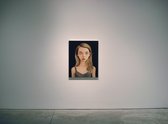
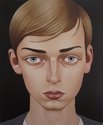
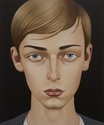
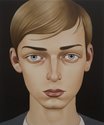
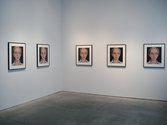
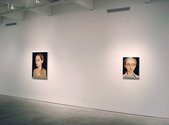

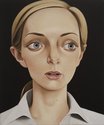

 Advertising in this column
Advertising in this column Two Rooms presents a program of residencies and projects
Two Rooms presents a program of residencies and projects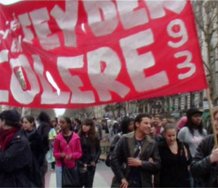
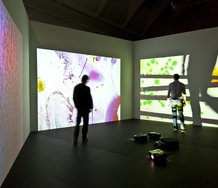
This Discussion has 0 comments.
Comment
Participate
Register to Participate.
Sign in
Sign in to an existing account.